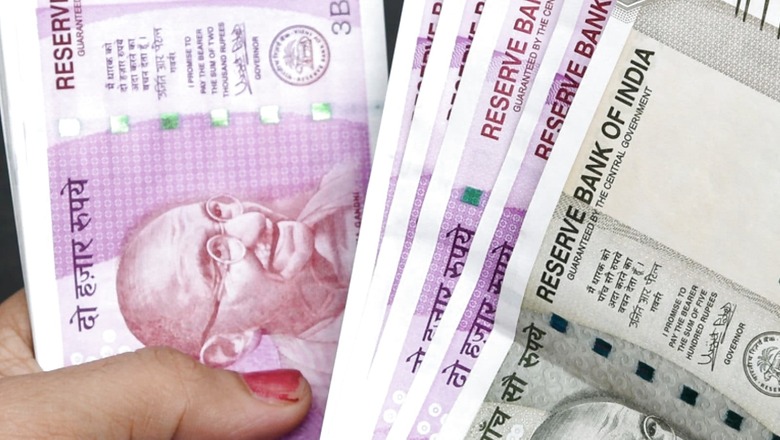
views
Finance Minister Nirmala Sitharaman in her Budget 2021 speech had announced the plan to set up an asset reconstruction company and an asset management company as a bad bank to consolidate and clean up the balance sheet of public sector banks (PSBs). Henceforth, the National Asset Reconstruction Company Ltd (NARCL) and Indian Debt Resolution Company Ltd (IDRCL) are being formed to address the problem of Non-Performing Assets (NPAs) of PSBs, allowing them to focus on their core business and credit growth.
The plan turned into reality after the approval of the Union Cabinet on September 16, 2021. Finance minister announced that NARCL will take over the existing stressed debt assets worth of Rs 2 lakh crore in phases, Rs 0.90 lakh crore of bad loans will be transferred to NARCL in the first phase. IDRCL has been tasked to resolve stress in five years.
The government will provide a guarantee of Rs 0.306 lakh crore for security receipts (SRs) issued by bad banks. PSBs will get 15 per cent of the aggregate value for NPAs in cash and remaining 85 per cent will be government guaranteed SRs. The government will cover these receipts. This will be redeemed from the amount realised after resolution of the NARCL.
The main aim of the bad bank would be to buy bad loans from banks at a discount in order to attempt recovery of money from various defaulters and clean the books of PSBs. Nevertheless, financial economist Raghuram Rajan is rejecting the concept of setting up a bad bank. He says it is shifting loans from one government pocket (PSBs) to another (bad bank).
While this is the first time we are going to form a bad bank, but whatever efforts we have made in this direction earlier have failed. There are two cases that are discussed in the Deloitte report of November 2020 on bad banks in India. The first case was the Industrial Investment Bank of India (IIBI). In 1971, the government formed the Industrial Reconstruction Company of India to rehabilitate sick units. It was renamed in 1985 as IIBI and tasked with buying bad loans from commercial banks and recovering these debts. Later on, IIBI became sick due to liberal recovery laws and closed down in 2012.
The second case is the Stressed Asset Stabilization Fund (SASF). It was created by the government as a special purpose vehicle in 2004 to acquire 636 NPAs of over Rs 9000 crore of erstwhile IDBI. However, it could recover only 44 per cent of the amount by 2013. However, state-owned banks have recovered Rs 5.01 lakh crore in the last six years. Of that, Rs 3.1 lakh crore has been recovered since March 2018.
As per RBI, we already have 28 registered private asset reconstruction companies (ARCs) in the country as of May 2021. They are being engaged in buying NPAs from various banks. But the model is not yielding desired results. The performance of existing ARCs is not satisfactory. As per the RBI report, despite the rise in number of ARCs, the growth in their assets under management has been largely trendless except in FY2014. In FY2020, assets sold by banks to ARCs declined, which might be due to banks opting for other resolution channels like IBC (Insolvency and Bankruptcy Code) and SARFAESI (Securitisation and Reconstruction of Financial Assets and Enforcement of Security Interest).
The success of NARCL would depend upon the fair valuation of NPAs. A report on sale of 302 cases of bad loans of over Rs 50 crore to ARCs during 2014-15 to 2017-18 by Central Vigilance Commission (CVC) depicts several irregularities in transferring bad loans. As per the report, in 48 cases, assets were sold below the realisable value of securities that the borrowers had given as security. In 55 cases, assets were sold within a year of the date of the account turning into a NPA, without the bank initiating recovery action under the SARFAESI Act.
The bad bank should be managed by professionals. Experts should not be only government staff; they should be from private sectors including reputed banks and investment banks. It is reported that state-owned financial institutions led by Canara Bank will hold 51 per cent stake in NARCL. The shareholder base could be broadened by including private and foreign institutional investors.
We hope that the efforts made by the government will be fruitful and it will clean the books of public sector banks.
Vinay K. Srivastava is the author of ‘Privatisation of Public Enterprises in India’ and teaches at I.T.S Ghaziabad, India. The views expressed in this article are those of the author and do not represent the stand of this publication.
Read all the Latest News , Breaking News and Ukraine-Russia War Live Updates here.




















Comments
0 comment